Every summer, I look forward to my favorite annual article: Mark Rosewater’s annual State of Design. It’s an opportunity to reflect on the past year of Magic design as Magic’s most prominent design voice assesses its triumphs and lessons for improvement.
The past year has been turbulent for reasons outside of Wizards’ control. The continued effects of the global pandemic and shipping crisis have created product delays and made for an erratic return to competitive tabletop events. We’ve also been passing through the sets for which set, vision, and exploratory design were all affected by the 2020 lockdowns. Still, the Magic got made and played, people seemed to be fairly happy overall, and there’s plenty to discuss.
Rather than focus on each individual point Mark Rosewater made, as I’ve done in the past (since I covered much of what he tends to say in States of Design two months ago), I’d like to focus on specific comments and things left notably unsaid.
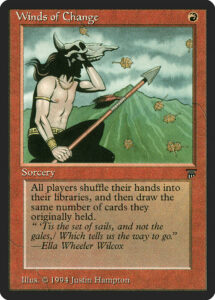
A year of transition
The biggest overall takeaway I took from the 2022 State of Design is that 2021-2022 was a period of transition, where prior changes caused some understandable growing pains in the form of miscommunication.
Wizards has been bulking up its staff for years to accommodate major new initiatives: creating 3+ worlds per year, Secret Lairs, Booster fun, a massive focus on Commander, a brand new division in Casual Play, overseeing a suite of digital game studios, and shifting the game away from Standard-focused to being Eternal-centric. A challenge in growing much larger in a relatively short span of time is communication.
It’s hard for a company to properly scale its infrastructure to meet the needs of your new hires, divisions, and the interconnections between them all. Internal communication issues are likely a major influence in Wizards’ missteps with external communication, like initially billing Double Feature as a curated format, referring to Midnight Hunt by the codename Innistrad: Werewolves, and New Capenna being full of angels despite being defined by their absence.
I strongly believe Wizards’ growth is good for both the game and its players. These issues should be temporary growing pains, not critical issues. Given the volume of them, I would be surprised if major communication issues are a big problem next year.
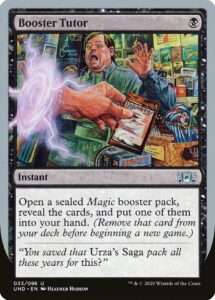
Let’s talk Limited
I’m a less well-rounded player than I used to be. Prior to the pandemic, I played a ton of Limited, a fair amount of cube, and quite enjoyed Pioneer and Modern. I traveled to several events each year and even qualified for the first (and only) Regional Players Tour. I was active in several communities through local game stores, cube circles, and Team Draft League. Now, I am 100% a Limited player. It was always the primary means by which I played Magic, now it is essentially the only means. This puts even more pressure on each set, since a dud Magic set means I (and others like me) disengage from the game, stay away from its communities, and buy less product.
All that’s to say, the quality of each Limited format has an overwhelming effect on my engagement with the game. Accordingly, I focus almost exclusively through that lens when reflecting on my feelings on the past year and my hopes for the next. I understand that I’m not a monolith—there are many Magic demographics overwhelming larger than that which I belong to—but I also know I’m not alone in deriving the majority of my play-based enjoyment from Limited. So with all that said, how was 2021-2022?
I found the two Innistrad sets fine but underwhelming. It was sweet playing blue in Midnight Hunt, but I already had my fill of sweet-yet-imbalanced formats earlier in 2021. I enjoyed Crimson Vow more, because despite its bombs, it had enough color balance to support a wider variety of archetypes and Blood plays great (even if the flavor is off). Neon Dynasty was the smash success of the year, making me care about one of my least favorite planes and a genre I don’t care for. Then, there was Streets of New Capenna, the first set I ever quit after playing for just one week. The highs were very high and the lows were absolutely dreadful. That’s probably a decent place for Magic to be—except for the most glaring omission in the State of Design. So before we get into supplemental sets, like’s quickly talk about the elephant in the room.
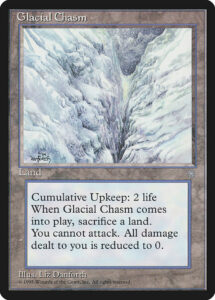
Endless summer
I kind of hate the new set release paradigm. The fall was crammed together, with Midnight Hunt’s release cascading directly into Crimson Vow previews, then Crimson Vow went on for too long. Streets of New Capenna had a similar release cascade into Commander Legends 2 and Double Masters 2, and then stagnated.
I know we’re only in the first year of this new schedule and there are kinks to be worked out, but I hope it changes. Wizards put some extra space between Dominaria United and Brothers War, but product delays have filled that meager gap with Warhammer 40K Commander decks and Unfinity releasing on the same day, right between the two releases. Here’s hoping we at least don’t have the same massive summer gap next year, or if we do, it’s a set with more longevity than SNC.
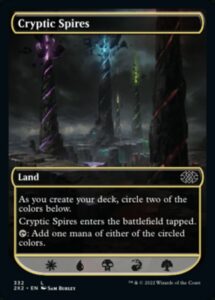
Double the fun, half the supply
Double Masters 2022 reminded me of Time Spiral Remastered in the best and worst ways: it was a ton of fun to draft, had Booster Fun meant for me, and was gone in an instant. The product was made for dedicated drafters, collectors, and those in need of reprints, but had insufficient supply for everyone. Drafts in NYC cost $50-$60 and were available for only one week, after which the set vanished from everyone but Magic Online (where I thankfully got to play it over 20 times).
I know that Wizards’ business model requires maintaining some amount of scarcity (and the supply chain snarl has caused major disruptions), but I wish Double Masters could be more like Modern Horizons. MH1 and MH2 had unlimited print runs and managed to balance a moderately high price point with valuable reprints and new cards. It feels like Wizards is leaving money on the table putting effort into curating awesome Limited formats and then printing so little product that there’s not enough to go around. This is especially troublesome when a slightly cheaper and much more available Double Masters 2022 would have given me something I wanted to play this summer.
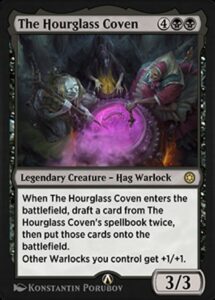
The other set
The lack of Alchemy Horizons in State of Design is significant. Normally, I wouldn’t expect it to be mentioned, but MaRo mentioned every other product, at least in passing. Heck, he had a whole section on Commander Legends 2 despite him not working on it. Alchemy Horizons: Battle for Balder’s Gate was the digital set for the summer, intended to carry players through the long drought New Capenna left behind, give Limited players some means of engaging with Alchemy, and provide a jolt of energy to the nascent Alchemy community. I’m not sure how successful it was at any of that, but I also don’t get the sense that the team designing Alchemy Horizons were fully supported.
Let’s talk art. There’s art wholesale reused from Battle for Baldur’s Gate, some of which gets five color filter treatments for each Specialize version. And yet, both Klement, Novice Acolyte and Lukamina, Moon Druid have six unique pieces of art. Lae’zel, Githyanki Warrior looks it was mid-design when the art budget got cut (only Lae’zel, Illithid Thral has unique art, while the other four Specialized versions have color filters). Now, that’s not a problem per se, but it’s rather strange for a set to both reuse and lightly tweak artwork when Double Masters 2022 went all out with alternate artwork from classic artists. And it’s not as though the reusing ends with art—the set contained a large number of AFR reprints and AFR’s balance issues. Beyond, it feels like the set had an enormous challenge in needing to port experiences from a Commander-focused product into a client that only supports 1v1.
I really appreciate what Alchemy Horizons is trying to do. It seems the perfect way to increase player engagement with Alchemy and to help balance the format’s economy. Still, I’m sad to say I didn’t play it—it came out right after my wedding, it was built upon AFR (one of my least favorite sets ever) and Commander Legends 2 (a set not for me), and what I heard about it was mostly discouraging. But I don’t fault the design team. Everything I’ve seen about the set suggests they did an admirable job with vastly insufficient resources. It sounds like the Arena team may be quite disconnected from Studio X, and that’s a real shame if Wizards wants people to view Alchemy releases as being of the same high quality as Magic’s other products.
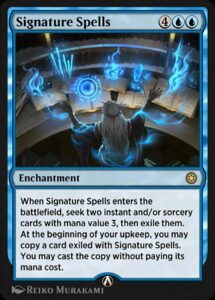
I look to 2022-2023 with cautious optimism and sadly a fair bit of apathy. I’m excited to see a take on the Brothers War, enjoy some nostalgia for the Magic of my childhood, and catch up with Koth and the Gatewatch. I’m gritting my teeth seeing Magic gear up for a yearlong event with the Phyrexians, as I still remember how badly I was burned by War of the Spark and the years of stories that followed in its wake. I’d love to be engrossed in the overarching story, but since 2018, every time I’ve tried, I’ve been disappointed.
With Modern Horizons 2, Time Spiral Remastered, Kamigawa: Neon Dynasty, and Double Masters 2022, Wizards has demonstrated that they can make sets I absolutely love. With AFR and SNC, they’ve demonstrated they can make premier sets so designed for other audiences that I stop playing. I’m confident there will be more things I love next year and hope that there won’t be any big misses—but at the end of the day, a couple products I love and one I quit completely is far better than a bunch of adequate releases.
All that’s to say, Magic is, as always, in flux. Some areas are great for me, others aren’t meant for me, and some are but aren’t living up to their potential. That’s not a bad place for the game to be, and it’s in line with the company itself being in flux. The change has caused ripples and hiccups, but change is necessary for Magic to survive. At the end of the day, I still find great enjoyment in playing Magic and I’ve gotten better at stepping away when I’m not finding it. And, as always, I’m appreciative of the window Rosewater continually provides into the game (but especially the giant one in State of Design).
Zachary Barash is a New York City-based game designer and the last commissioner of Team Draft League. He designs for Kingdom Death: Monster, has a Game Design MFA from the NYU Game Center, and does freelance game design. When the stars align, he streams Magic (but the stars align way less often than he’d like).

